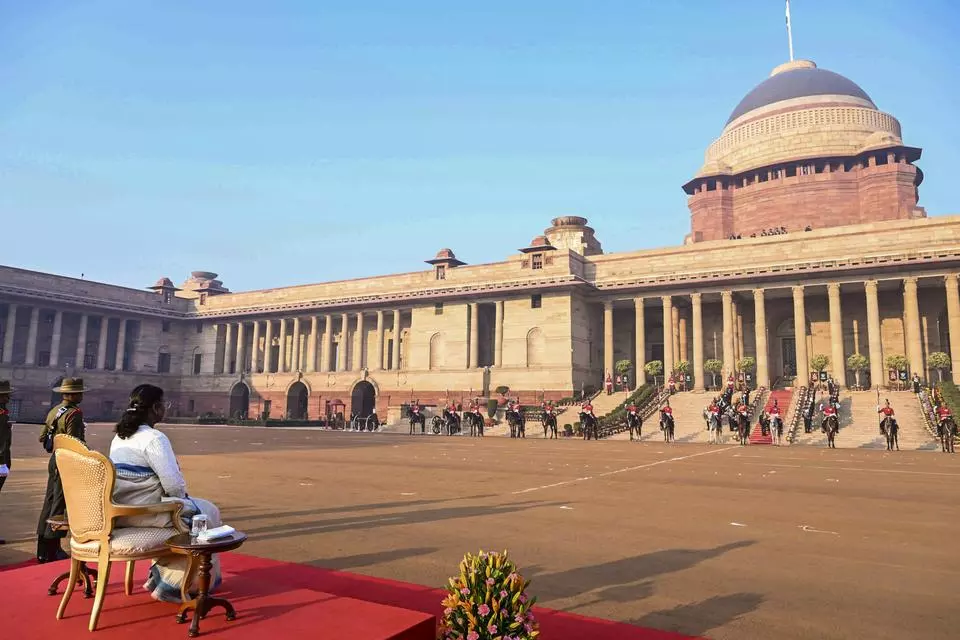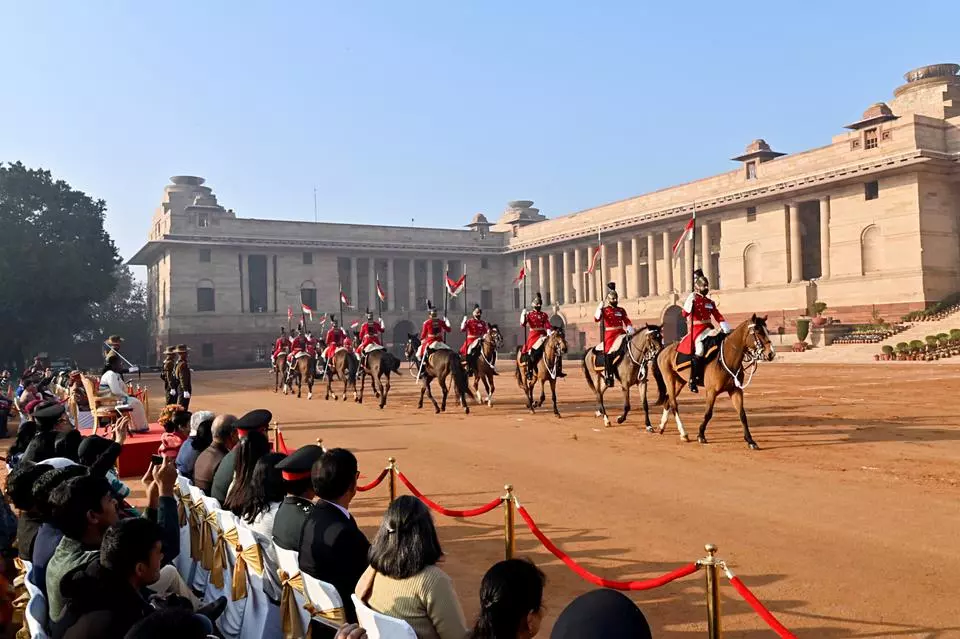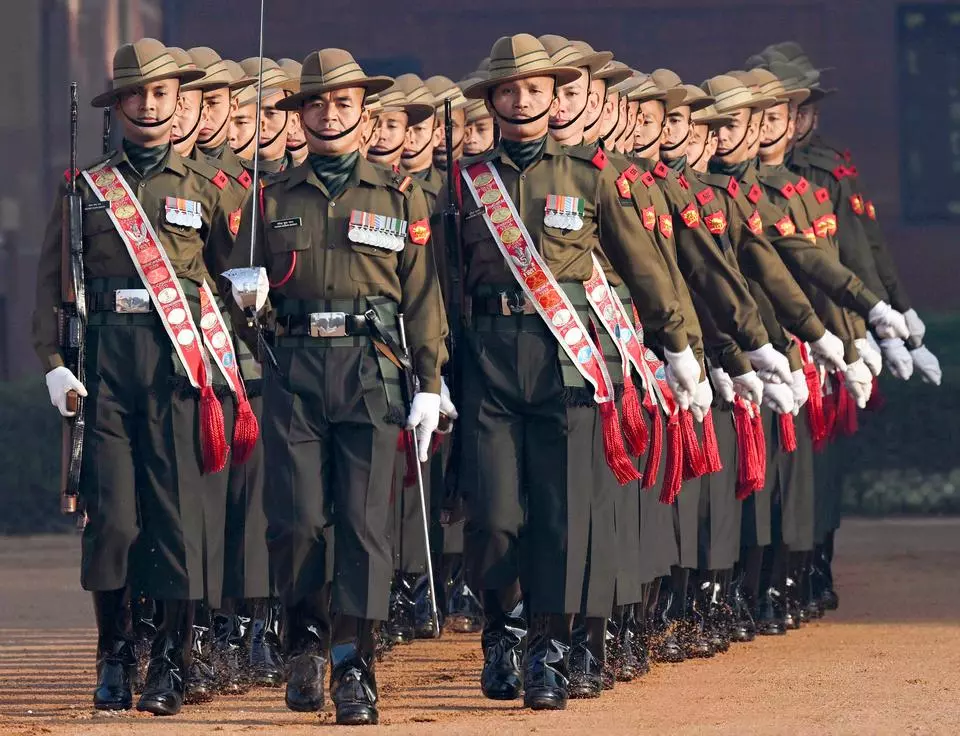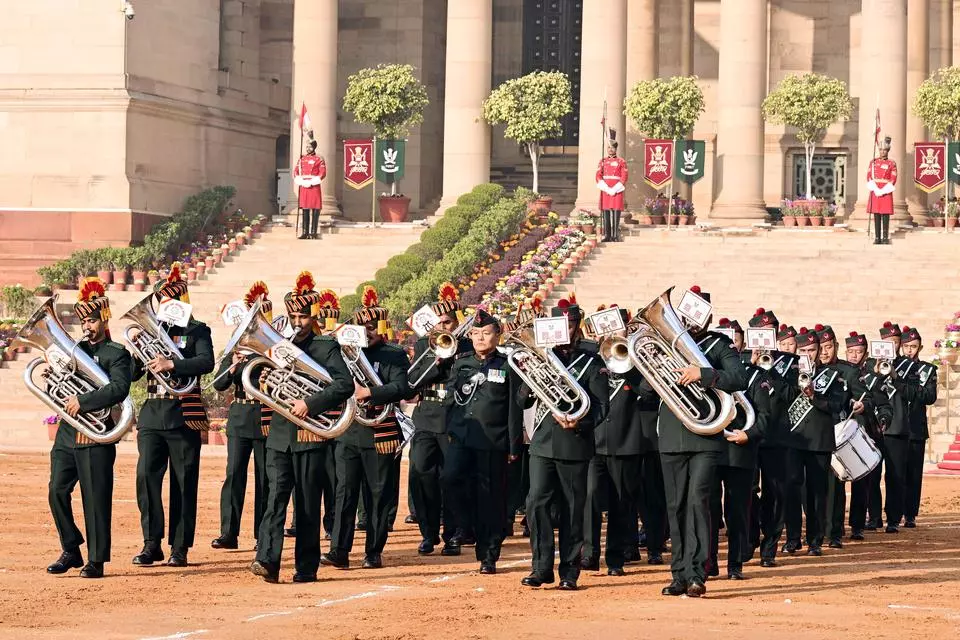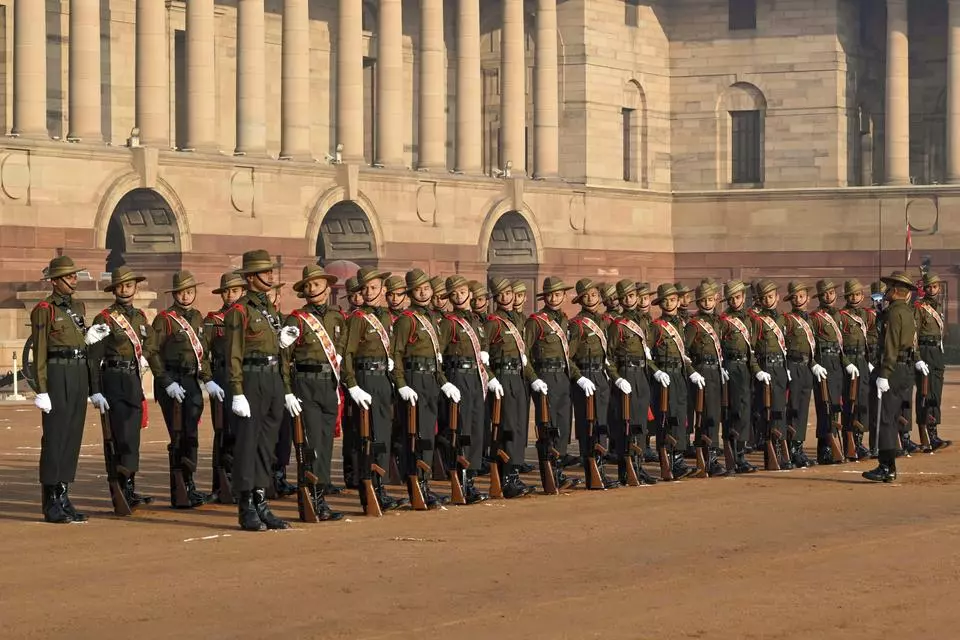The majestic forecourt of the Rashtrapati Bhavan came alive on Sunday , marking a new turn in the colonial legacy following a great spectacle showcasing synchronised movements by the Ceremonial Battalion, precision drills by the President’s Bodyguard and a performance by the Ceremonial Military Brass Band.
Video Credit: Businessline
President Droupadi Murmu witnessed the inaugural show of the Change of Guard Ceremony in a new format at the Forecourt of Rashtrapati Bhavan.
Previously held between Jaipur Column and Gate No. 1, it was shifted to the Forecourt to allow more people to watch the ceremony conducted weekly for formal handover of duties between the outgoing and incoming guards.
Two columns of mounted President’s Bodyguards (PBG) performed majestic display of galloping equestrian to amplified music flowing out of instruments played by the Ceremonial Military Brass Band enthralling visitors on Sunday with the receding winter adding to the warmth of the ceremony.
From next Saturday, spectators can witness a dynamic visual and musical performance, with the Rashtrapati Bhavan as the backdrop which since 2014 has also been hosting the swearing in ceremony for Prime Minister Narendra Modi and his Union Ministers.
Military drills by troops and horses of the PBG , and troops of the Ceremonial Guard Battalion, along with the Ceremonial Military Brass Band, spread over a larger area are part of the new format, the Rashtrapati Bhavan said.
The Change of Guard, a time-honoured tradition followed across the globe at palaces, military stations and heads of nations’ premises, was introduced as a ceremonial event in 2007 at the Rashtrapati Bhavan. A public event, started in 2012, to give the citizens a unique opportunity to witness and capture this grand spectacle.
The President’s Bodyguard is the oldest cavalry and senior most regiment of the Indian Army. The PBG personnel are excellent horsemen, capable tank men and paratroopers.
According to Rashtrapati Bhavan, the elite President’s Bodyguard traces its lineage over 250 years, with the establishment of The Governor’s Bodyguard, in 1773, at Varanasi.
Raja Chet Singh of Benaras (Varanasi), significantly contributed to its formation by providing fifty horses and fifty troops.
“The original charter mandated the Regiment to accompany the Governor in times of war and to serve as a ceremonial bodyguard during peacetime. This spirit was retained through subsequent re-designations, the Governor General’s Bodyguard in 1774, and the Viceroy’s Bodyguard in 1857, continuing until India’s independence,” its history on Rashtraparti Bhavan website read.
During World War I and World War II, the Regiment was modernised, acquiring armoured personnel carriers in 1942. By 1944, it was designated as the 44 Division Reconnaissance Squadron of the 44th Indian Airborne Division, marking its establishment as the first airborne cavalry regiment.
Post independence, the Regiment was bifurcated, with half the horses, troops and equipment allotted for the Governor General’s Bodyguard – India, stationed at Rashtrapati Bhavan, while the remainder was sent to Pakistan.
In 1950, with India’s transition to a Republic, the Regiment was officially re-designated as the President’s Bodyguard.
make unique content without any copyright and use your words instead of source words and fix the spelling and grammar errors



